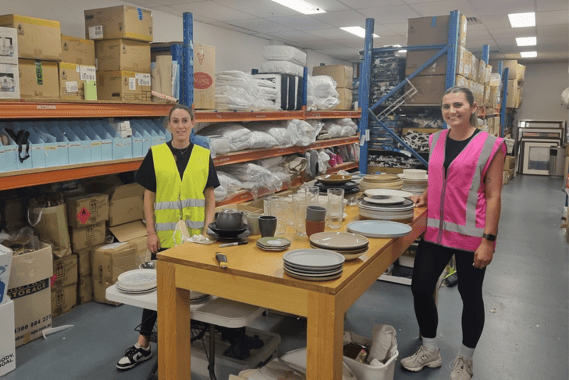
Transforming the face of Kraft Foods in Australia and New Zealand

Human resources director, Peter Brydon discusses the challenges and successes of Cadbury's integration into the Kraft Foods Australia/New Zealand business...
2 February 2010 will forever be etched in Kraft Foods corporate history. This was the day that Kraft Foods global business successfully concluded its acquisition of Cadbury after a hostile, four-month takeover.
In Australia, Kraft Foods went from a relatively small business with annual revenue of $524 million and 650 employees - to a large corporation with annual revenue of $1.65 billion and more than 3650 employees.
On the same day, Kraft Foods Australia/New Zealand appointed a new president to its business - Rebecca Dee-Bradbury.
The integration of Cadbury into Kraft Foods was recognised as a big opportunity. As a combined business, Kraft Foods ANZ would now be a leader in both spreads and confectionery, as well as number two in biscuits. Together, the businesses shared a history of over 160 years and were the custodians of some of Australia's most loved and trusted products, including Vegemite, Cherry Ripe, Cadbury Dairy Milk and Oreo to name a few.
However, the business had to address some critical elements in order for the integration to be a success.
- We needed to stabilise and engage our key leaders. The business understood that people are the key to high performance, so finding leaders that would collaborate and encourage their teams to collaborate was a key to our transformation.
- We needed to effectively communicate with our employees the timing and process of bringing the two organisations together.
- We had to share our vision with employees and build a compelling story about how combining both organisations would make us stronger, more secure and more competitive.
How did we do this?
With over 80% of our combined workforce new to Kraft Foods Australia/New Zealand, it was fundamentally about winning the hearts and minds of employees.
All employees were asked to come on a journey - to create the best consumer goods company in ANZ and to deliver on our higher purpose to 'Make Today Delicious'.
We also set ourselves a clear goal - to be a powerhouse in snacking and build an unrivalled portfolio of brands that people love.
What we didn't do
We didn't ask anyone to forget their past. We offered all Cadbury employees a new Kraft Foods Passport. It was important that they could keep their Cadbury Passport and their purple pride, but it was also about taking a step towards being a Kraft Foods Citizen.
Our journey of transformation focused on four key areas:
1. Constructive leadership
The first and most critical element of transformation for the business was constructive leadership. Our leaders needed to have a positive impact across the organisation. Those that could be task-oriented yet people-focussed, and were also passionate about empowering their teams and coaching.
2. Facing the honest facts
The integration required the business to face the brutal facts. Whilst this can be a painful process, we recognised that behind problems lay opportunities that would enable us to perform better. It was also about seeking to understand, solve and act as one team.
3. Right people, right roles
People decisions are perhaps the most important decisions we make as leaders. The business focused vigilantly on this, to ensure that we put the right people into the right roles. We defined 'right' as people with the right values, right skills and the will to achieve. And we reviewed every role in the organisation. Within 120 days we had selected our top 100 leaders and confirmed their roles.
4. Focusing on the core issues
The greatest barrier to transformation is lack of focus. We therefore focused on less and did it bigger and better. We chose to create a burning ambition, not a burning platform. However, whilst our ambition in ANZ is to be a snacking powerhouse with an unrivalled portfolio of brands people love, many of our core brands at the time of integration were in flat or slow growth. We therefore understood that we needed to create belief that we could achieve. In essence, we needed a common language around our strategy and leadership.
We decided to engage leaders in a simple one-page plan, which described the key elements of our strategy. They were then easily able to digest this themselves and innovatively articulate it to their teams.
Our winning through focus strategy is working and already paying dividends, as evidenced by the fact that we:
- grew our annual revenue in 2010;
- grew market share last year in three key categories - chocolate, dairy & grocery, and biscuit; and
- kept our employee turnover under our target of 12% - especially important in the area of high potential talent.
When I reflect on what we could have done differently there are two things that come to mind:
- A key learning for us was that the integration of two iconic companies meant that essentially we were creating a new company, therefore all employees, not just external appointments, required a comprehensive induction.
- Whilst we focused heavily on communicating the integration with our employees and ensuring an efficient process to appoint roles, we underestimated the impact that day-to-day environmental measures, such as different computer systems, separate offices and ordering systems might have on the productivity and comfort levels of employees.
Despite these oversights, we're off to a great start as a combined company and we have a phenomenal future ahead.
Peter Brydon is human resources director of Kraft Foods Australia/New Zealand.
Related


Developing a Career Plan
Just as any successful organisation meticulously crafts a clear and strategic business plan to...

What to expect when meeting a recruiter for an interview
Meeting with a recruitment consultant is an opportunity to demonstrate how you will present for a...


 Accessibility
Accessibility